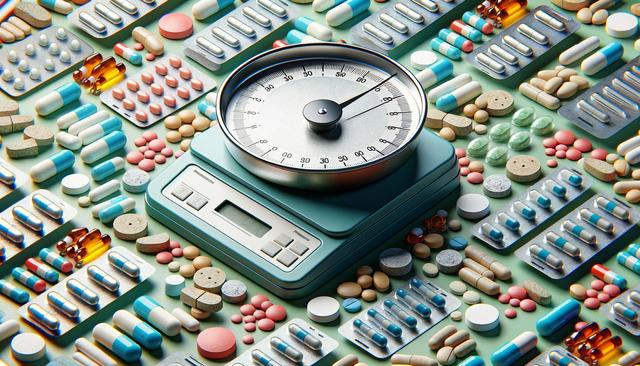The Importance of Pharmaceutical Packing in Healthcare
Pharmaceutical packers are central to the pharmaceutical supply chain, responsible for preparing medications for safe consumption and distribution. Their work ensures that the drugs reaching hospitals, pharmacies, and ultimately patients are properly sealed, labeled, and stored to maintain quality and compliance. Packaging in the pharmaceutical industry goes far beyond aesthetics—it serves crucial functions such as protecting the product from contamination, extending shelf life, and ensuring accurate dosage information.
Effective packaging must meet stringent regulatory standards, including those related to material quality, labeling accuracy, and tamper-evidence. These standards protect consumers from counterfeit drugs, ensure correct usage, and support traceability throughout the product’s lifecycle. For manufacturers, pharmaceutical packers help mitigate risks and uphold brand integrity, which are essential in a tightly regulated environment.
Key Responsibilities of Pharmaceutical Packers
Pharmaceutical packers handle a variety of tasks that require attention to detail and adherence to strict protocols. Their primary responsibilities include:
- Weighing and counting tablets or capsules
- Filling containers with the correct dosage
- Sealing and labeling bottles, blister packs, or sachets
- Inspecting packaging for defects or inconsistencies
- Maintaining clean and sterile work environments
These tasks are often carried out in controlled environments, where temperature, humidity, and contamination risk are carefully managed. Packers are also trained to follow Good Manufacturing Practices (GMP), which govern every aspect of the packing process to ensure safety and efficiency. Their role is not only operational but also compliance-focused, as improper packing can lead to recalls, legal issues, and even health risks.
Types of Pharmaceutical Packaging
Pharmaceutical packers work with various types of packaging, each suited for specific products and purposes. Common formats include:
- Blister packs – Ideal for solid doses like tablets and capsules, offering protection and easy dosage tracking
- Bottles – Used for both liquid and solid medications, often with child-resistant caps
- Sachets – Single-use packages for powders, granules, or liquids
- Ampoules and vials – Glass containers used for injectable drugs, ensuring sterility
The choice of packaging depends on factors such as the drug’s form, required shelf life, and patient convenience. Packers must be familiar with each type to ensure they meet both functional and regulatory requirements. Technology also plays a role, with automated machines assisting in tasks like filling, labeling, and sealing, although human oversight remains critical to detect anomalies and maintain quality standards.
Quality Control and Regulatory Compliance
Quality control is an integral part of the pharmaceutical packing process. Every stage—from material selection to final inspection—is subject to rigorous checks to prevent errors and avoid contamination. Pharmaceutical packers must document each batch, recording data such as lot numbers, expiration dates, and packaging conditions. These records support traceability and accountability, which are essential in case of recalls or audits.
Regulatory bodies such as national health authorities require that all pharmaceutical packaging complies with established safety and labeling standards. Non-compliance can result in heavy fines, product recalls, or loss of manufacturing licenses. Therefore, packers must work closely with quality assurance teams to monitor and validate each step of the process. This includes regular training, audits, and equipment calibration to ensure ongoing compliance and product safety.
The Evolving Role of Technology in Pharmaceutical Packing
Technological advancements are reshaping the role of pharmaceutical packers. Automation and digital systems are increasingly used to enhance accuracy, speed, and traceability. For example, modern packing lines often include:
- Vision systems that detect labeling errors or packaging defects
- Automated weighers and fillers for precise dosage
- Track-and-trace systems to monitor the product’s journey from production to delivery
Despite the rise of automation, skilled human packers remain essential. They oversee machine operations, perform manual inspections, and manage exceptions where machines fall short. Additionally, new technologies require workers to develop digital skills and adapt to evolving systems. The balance of human oversight and technological support ensures that pharmaceutical packaging continues to meet high standards of safety and efficiency.
Conclusion: Supporting Public Health Through Precision and Care
Pharmaceutical packers are a critical link in the healthcare supply chain, ensuring that medications are delivered safely, accurately, and in compliance with strict regulations. Their work supports public health by reducing the risk of medication errors, protecting drug integrity, and ensuring patient trust. As technology continues to evolve, so too does the role of the pharmaceutical packer—requiring adaptability, attention to detail, and a strong commitment to quality. For anyone involved in the pharmaceutical industry, recognizing the value and complexity of this role is essential to maintaining high standards and delivering effective healthcare solutions.




Leave a Reply